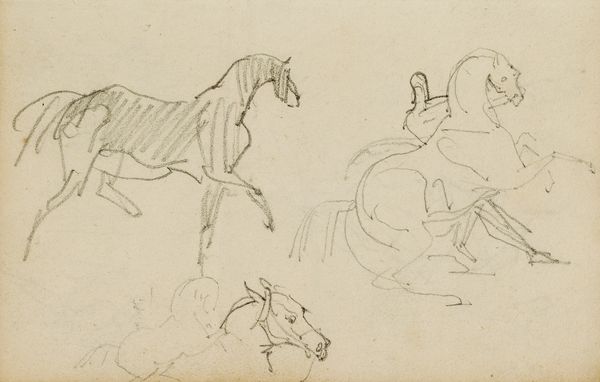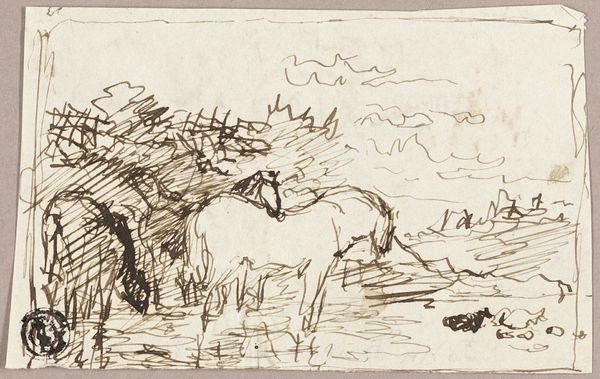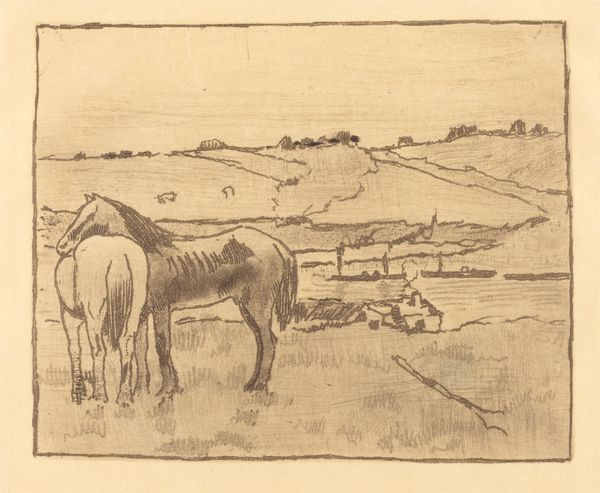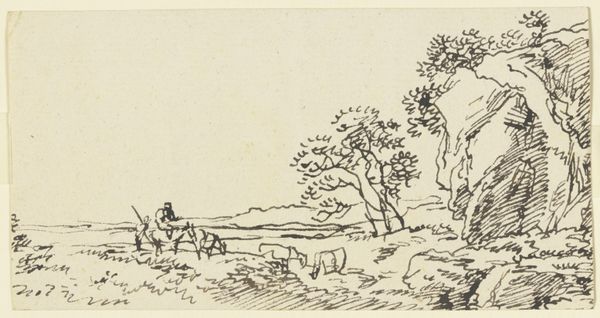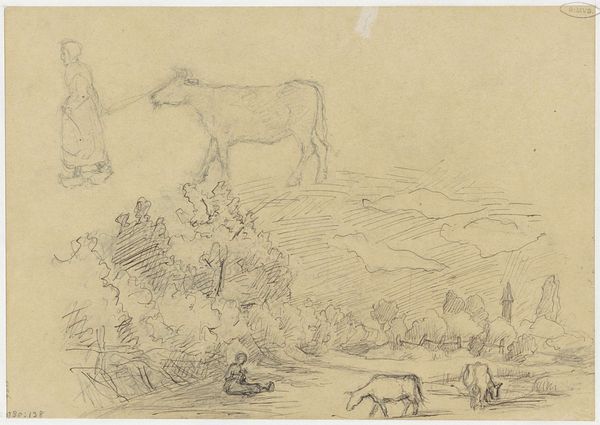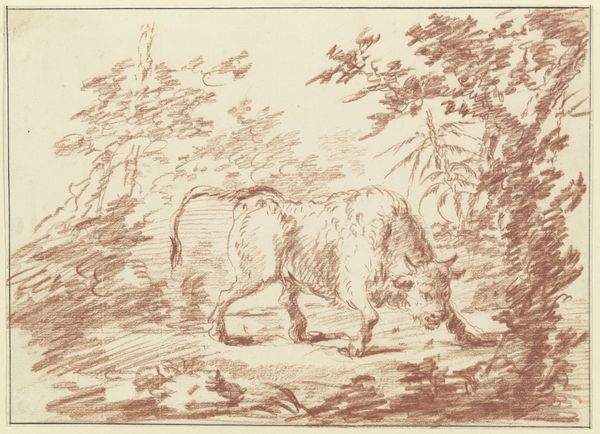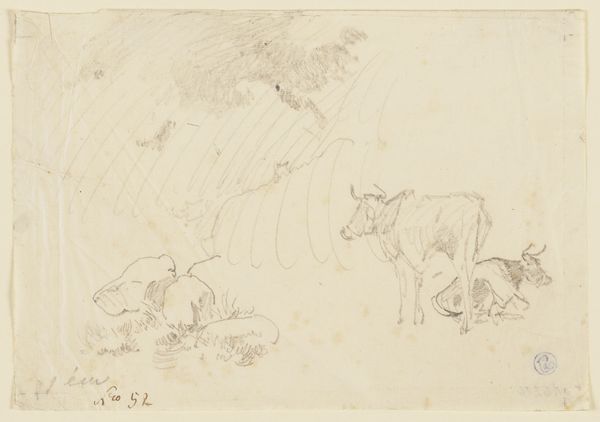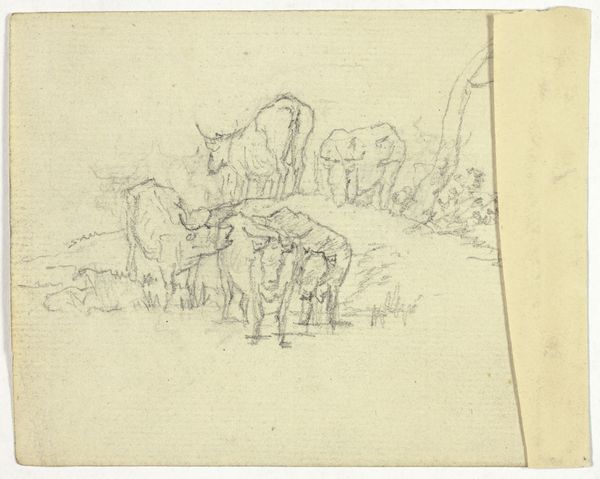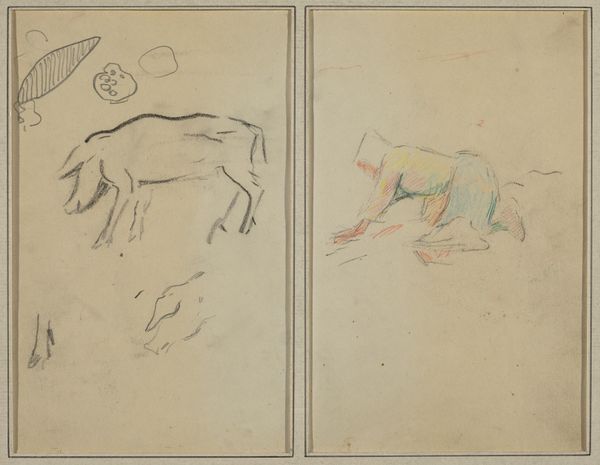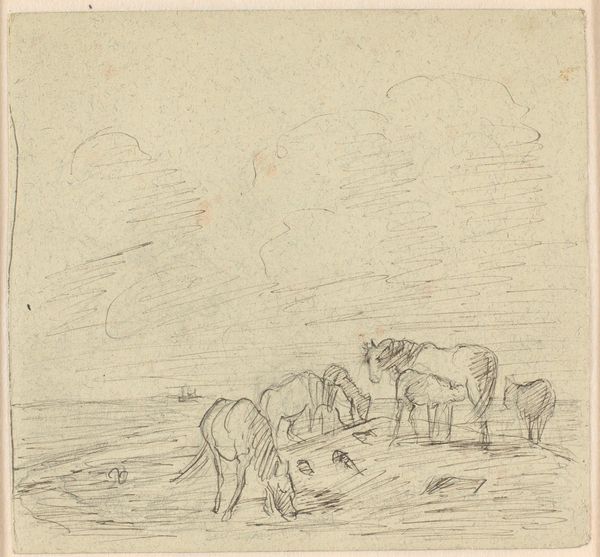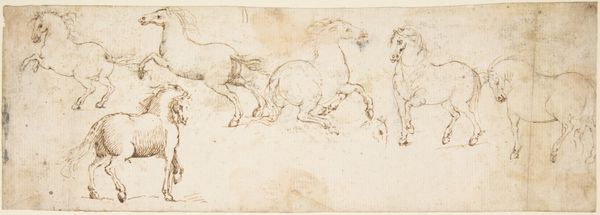
drawing, ink
#
drawing
#
asian-art
#
landscape
#
figuration
#
ink
Dimensions: Image: 37 in. x 25 ft. 10 3/4 in. (94 x 789.3 cm) Overall with mounting: H. 38 1/2 in. (97.8 cm)
Copyright: Public Domain
Curator: Here, we see "One Hundred Horses", a work on paper created between 1723 and 1725. It's currently housed at the Metropolitan Museum of Art. Giuseppe Castiglione employed ink in this drawing. Editor: Immediately, the linework strikes me. It's so delicate and economical, especially in suggesting musculature. There's a subtle rhythm in how these horses populate the landscape. Curator: Indeed. Consider how the negative space interacts with the drawn forms. The emptiness around the figures becomes integral to the overall composition, focusing our attention on the relationships between the horses themselves. Their positioning echoes classic compositional techniques seen in landscape art. Editor: From a material perspective, let's consider the implications of ink. Its inherent fluidity necessitates control but also invites a certain spontaneity. Castiglione masterfully balanced precision with the organic quality of the medium, hinting at the long hours of labor in his approach. It seems he really focused on how the horses were represented with the ink material at his disposal. Curator: Absolutely, there is a visual order. Take note of the foreground, middle ground, and implied background and also how the individual horse poses direct the eye, orchestrating the composition's overall feeling of space. It generates a symbolic language about nature and the natural world through those poses. Editor: And how that connects with labor! These were working animals. Think about the infrastructure of Qing dynasty China, the horse’s significance not just as transportation, but as a part of state power. How that translates into Castiglione's technique—his handling of the brush, his control. Curator: A valuable point. Ultimately, though, this work uses representational accuracy to reinforce visual harmony. The variations of form are always guided towards an ideal of balance, mirroring established compositional patterns. Editor: But the work with ink on this scale means his studio practices, assistants who prepared the materials and grounds... all point to larger social network necessary to support even what seems a 'simple' drawing. It is far removed from ideas of an artist alone at the easel creating spontaneous genius! Curator: A wonderful counterpoint to consider for those seeing the artwork today. Editor: Agreed. Reflecting on how material production meets artistic process reshapes one's encounter with the art itself.
Comments
No comments
Be the first to comment and join the conversation on the ultimate creative platform.
